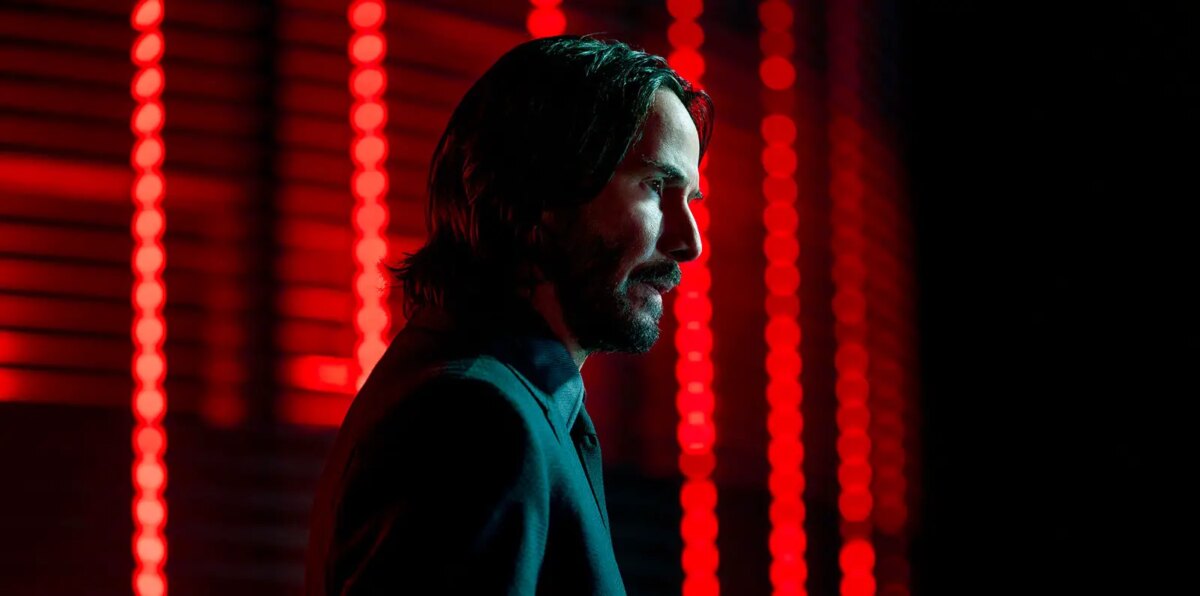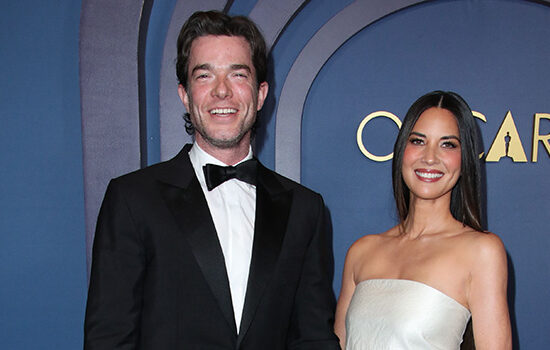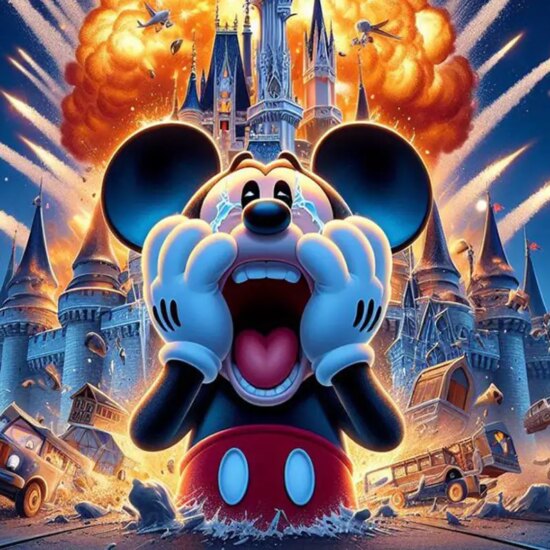
John Wick 4 is an indulgent film, and that’s understating the matter. At eleven minutes shy of three hours, it is a crucible of ultraviolence and hyperbolized aesthetics. Still, the latest iteration of the Keanu Reeves-led franchise has proven enormously popular, with many fans even comparing it to the original. And yet, for all its spectacle, something is lost in the fourth film—subtly, John Wick 4 has dismantled the Baba Yaga mythology that made the original so great.
Let’s consider a beloved sequence from the first John Wick, wherein John tracks Iosef Tarasov—played by Alfie Allen—to his mob safe house. In this scene, John’s methods are that of a phantom. He systematically eliminates every guard without being seen, forcing Iosef to flee to the garage, where John is waiting for him. The scene’s composition reflects John’s wraithlike nature—we get glimpses of him, but he only appears fully in the frame at the very end to execute Iosef with a single bullet to the head.
This scene encapsulates everything that makes John Wick so feared. He is perfectly calm, preternaturally aware, and ruthlessly efficient. As an audience, we instantly intuit the resounding veracity of his moniker—Baba Yaga—the Bogeyman. But, when it comes to his trade, John is scarcely a man and more a grim reaper-like entity.
Now consider a similar sequence in John Wick 4, wherein John is tasked with assassinating Scott Adkins in a fat suit, otherwise known as Killa. He pursues his target through a crowded nightclub, fights a handful of goons, and proceeds to get pummeled by Killa and thrown off of a balcony, slamming his back against a metal beam in the process. Completely unscathed, John promptly fights more goons before receiving yet another pummeling from Killa; this time, however, he does an inspiring Rocky impression, summons a bout of unseen strength, and kicks Killa down a flight of stairs, killing him.
“…something is lost…John Wick 4 has dismantled the Baba Yaga mythology that made the original so great.”
Comparing these two scenes reveals an important distinction in John’s character between the first film and the fourth. In the original John Wick, his actions inform his mythos. His skill is clear, and his methods are lethal. The film cleverly uses John’s legend to push the boundaries of realism. Consequently, Iosef’s death is an exact mirror of the Baba Yaga mythos—it is brutal, haunting, and resonant.
In John Wick 4, however, the formula is reversed, as his mythos now informs his actions. No longer does he need to be skillful; instead, he just needs to be present. Rather irreverently, the film uses John’s legend not to push the boundaries of realism but to reject them wholesale. Consequently, Killa’s death is a parody of the Baba Yaga mythos—it is garish, drawn out, and almost laughably ridiculous.
Much of this has to do with the change in scope the franchise has taken. Whereas John Wick and John Wick 2 are focused thrillers, John Wick: Chapter 3 and John Wick 4 have opted for a deliberately epic style, one which demands an aggrandized cinematic sensibility. Nevertheless, a movie can be grand as well as internally coherent. John Wick 4’s villainous Marquis de Gramont—played by Bill Skarsgård and easily the best antagonist since Michael Nyqvist’s Viggo Tarasov—speaks regularly about actions and their consequences. Ironically, this is precisely what John Wick 4 lacks. John is routinely ejected down multiple stories or struck by moving vehicles with zero consequence. This makes the dizzyingly elaborate fight scenes tedious, as there are no stakes. And while there is something to be said of the franchise’s audacious, tongue-in-cheek style, such audacity has about as much relevance to the self-serious John Wick 4 as John’s dog.
However, the biggest and most insidious consequence of disregarding the Baba Yaga mythos is that it will ultimately render John Wick no longer an interesting character but a risible caricature. Because John is effectively invincible—but as a punching bag rather than an elite assassin—the forthcoming sequels will pit him against ever more absurd situations, and he always prevails. John Wick will become the cinema version of One Punch Man, except without the satire.














